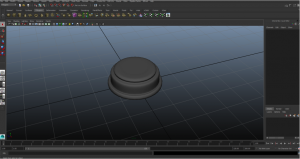Blacksburg, VA; April 17, 2015 –
Big things are happening in War of Ages this week. First of all, out mid-level prototype is complete and ready to be tested. We will be sharing the prototype with anyone who is willing to play to get as much feedback as possible. Once we finish testing we can solidify our balancing plans and ensure every game will be fair and fun. We have decided to run our prototypes with limited numbers of units in order to pinpoint balancing problems. With fewer units in play, there are fewer variables to cause problems.
Our prototype isn’t the only big news from our team this week. Progress on the game has been swift this week. In the last week the team has made the complete game board, with random mountains and lakes scattered throughout, making each game a unique experience. With the map generation, we have also developed the visuals for the grass, water and mountains. The mountains even utilize the 3D and pop out of the map. Once the map was complete we were able to implement unit movement too. When the user clicks on a unit, it becomes selected and highlights the spaces around it that it can move to. This movement range takes into account the terrain, and other units. In order to move you have to click a space next to the selected unit and it will move there and change the highlighted spaces where it can move(since it has one less move this turn and is in a different spot). According to programmer AJ Fritsch “The game has been coming together faster than we thought. It looks like it will be a lot of fun, and I can’t wait to release it”.
Next on the agenda is to implement turns so that units can only move on their turn, and their movement range will reset after each turn. With the implementation of turns we can then add in the mana crystals to restrict the number/type of units spawned each turn. After all of this the last step to finishing the game is to add in the mines and the bases. These features should complete the game, leaving the only programming left to be menus.
With this exciting news, you should be expecting to be able to join the battle within the next couple of weeks.
For more information, contact Joe Wileman @ wjoe113@vt.edu
 This week the AddHawk team began the development of the Android and web platforms of PixelPusher. These two platforms are the team’s first steps toward a high-fidelity prototype, which should be finalized within the next week. To give the high-fidelity prototypes the functionality that they require, an API was developed to allow for communication of data between the server and the client-facing applications. The aesthetics of the prototype are of great importance as well, so the team also spent time designing a batch of icons for the front-end of the application on both platforms.
This week the AddHawk team began the development of the Android and web platforms of PixelPusher. These two platforms are the team’s first steps toward a high-fidelity prototype, which should be finalized within the next week. To give the high-fidelity prototypes the functionality that they require, an API was developed to allow for communication of data between the server and the client-facing applications. The aesthetics of the prototype are of great importance as well, so the team also spent time designing a batch of icons for the front-end of the application on both platforms.